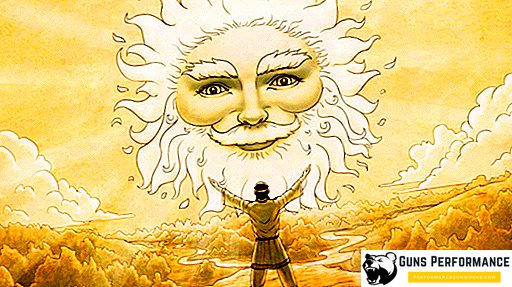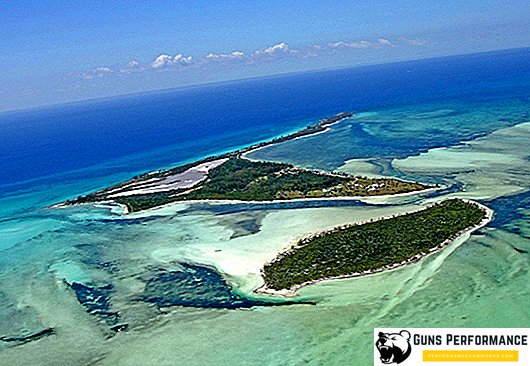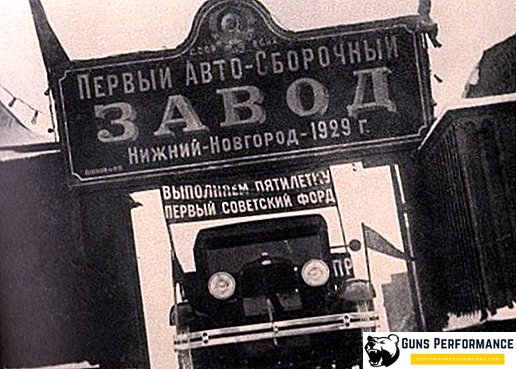The current generation of people is observing the world through the prism of modern science. Even the most amazing manifestations of elements, such as earthquakes, floods, hurricanes or tornadoes, volcanic eruptions, solar and lunar eclipses, do not cause as much trepidation as our ancestors had. Modern people in most cases see themselves as more masters of nature than their victims. In ancient times, people's perception of the world was completely different.

Everything that happened to them or around them was not completely accessible to them to understand, and everything that happened to them had to be somehow explained. According to modern science, in their ignorance, people attributed everything to the most diverse otherworldly forces - gods, demigods, fairies, elves, devils, demons, ghosts, restless souls, etc.
And all this lived in heaven, underground, in fire, and also in water. People considered themselves dependent on these entities, because much depended on their location, in general, their whole way of life. As a result, it is precisely because of the fear of the unknown that almost all religions begin, including the Slavic ones.

No exact information has been found yet, how and where did the Slavs come from in Europe, and which peoples are their ancestors. Scientists believe that in the 1st millennium AD Slavs occupied a vast territory: from the Balkans to Central Europe and the Dnieper. At that time, the territory of the modern Russian borders of the Slavic tribes did not exist.
Approximately in the 6th century, three branches stood out in pan-Slavic unity: the southern, western, and eastern Slavs. South Slavic peoples (Serbs, Montenegrins, etc.) later became Slavs who settled on the frontiers of Byzantium, gradually merging with its inhabitants. Western Slavs occupied modern Poland, the Czech Republic, Slovakia and partly Germany. And the eastern occupied the vast territory of modern Belarusians, Ukrainians and Russians.

Slavs were engaged in the cultivation of wheat, barley, rye, millet, peas, buckwheat, cattle breeding, hunting and fishing. At the household level, the Slavs used the so-called ritual calendar, which reflected agrarian magic. It marked all the days associated with the spring-summer agricultural season, everything was calculated: the sowing of seeds and the harvest.
Pagan holidays of the ancient Slavs
The basis of the rituals of the Slavic farmers was the doctrine of how to successfully influence the elemental deities in order to obtain good harvests. A large number of ancient shrines have reached our time, in which a variety of ceremonies were held. The echoes of these sacred events can be considered as the well-known children's games and round dances.
The highlands were mainly located under the open sky. They had round shapes, which were based on two concentric walls. Lights were kindled along their circles, wooden idols were installed inside. Immediately on the burning altar and sacrifices were made to the gods, and they were not limited to human ones. The outer circles of the temples were intended for people to use the sacrificial ritual food, and they were called "trebishchi". And the round forms of such temples and defined their name - "mansion" (from the word "horo", which meant a circle).
The ritual component of Slavic paganism was conditionally divided into two spheres. The first of these was community rituals. These are calendar holidays, agrarian cult, and also holidays as a tribute to gods. In the second, there were family rituals and ceremonies, such as weddings, "birthing" ceremonies, and funerals. Most of the communal rituals related to calendar cycles, and family - to life.

Winter holidays of the ancient Slavs
At the end of December, cold weather, when the daytime is already arriving, the holiday, called Kolyada, is celebrated. So, on December 25, on the day of the winter solstice, the carols began to dress like bears, goats, and horses, walking from house to house with songs called "carols." Together with the wishes of all the blessings for the house and the gathering of alms - pies, loaves and sweets, they jokingly promised ruin and misery to the misers.
Then it was assumed that while people were caroling, evil spirits had to rampage and steal the Moon and stars from heaven. The festival embodied the transition of the luminaries from winter to spring, the victory of light forces over dark ones. To assist the sun in defeating evil spirits, people burned a fire pit, sang songs and danced around the lights. In some places, Kolyad was called Avseni or Tauseni, which, according to the assumptions of the researchers, came from Ash and was one of the sun names.

The ancient Slavs had a belief that the dead are not devoid of all the sensations of life. Because winter was just night, darkness for the souls of the ancestors, and spring - the awakening of a new life. During the festival of the birth of the sun - Kolyada, it was considered that the dead rose from their graves, and their souls wandered around the world, frightening the living. Consequently, during the celebration of Kolyada, there was observed a mixture of the solar cult with the cult of the departed, which was also characteristic of other pagan holidays of the Slavs.
Spring holidays of the Slavs
Another holiday, preserved to our days, was called Meatpest, which was later renamed Shrovetide. It was celebrated at the beginning of spring, but since Lent was in this period, then with the adoption of Christianity, the triumph was postponed a week in front of it and partly on Holy Sunday.
Shrovetide is a holiday in honor of the sun god, which the Slavs had four, so this sunny ritual was held: during the celebration, the big sleigh was carried by a masked peasant who was sitting on a wheel, which was located on a pole mounted on a sleigh. A wheel, of course, the Slavs symbolized the sun. In addition, during the celebration of Shrovetide, the men engaged in fist fights, wrestling, and the children enjoyed the performances with the bears. Traditional pancake dish was and remains - pancakes.

In addition, Pancake Day was also considered a funeral week, and pancakes were baked for funerals. The first pancakes were always given to the poor so that they could remember the dead. Oparah prepared at the river or lake in the evenings, when stars appeared with the call of the month to drop in and blow onto the opar. All this was done secretly from everyone, be it domestic or outsiders.
There is also the so-called undisturbed Maslenitsa. This is the time when, with the beginning of spring, people visit the graves of their departed ancestors. It was assumed that their souls rise from the graves in order to share the memorial pancakes with those who brought them. The arrival of spring was usually met on the "red hills", where dancers were performed, spring rituals were held, and finally a straw effigy was burned. It was Mara, who was considered the personification of not only winter, but also death.
It was celebrated on April 12 even Naviy day. On this day, people visited the graves of deceased relatives. Naviy day was considered a rite of resurrection of the dead.
Summer holidays of the Slavs
The third most important holiday was the holiday of Ivan Kupala. He was celebrated on the Ivanov day of the summer solstice in honor of the deity of the summer and fertility of Kupala. It should be noted that on the night of June 23-24, it was believed that herbs have miraculous power.

People believed that only on this night the fern blossomed, and the finder recognized the language of all living beings. At this time, the river was covered with a silvery shine, and the trees moved and the noise of the branches communicated with themselves. The sun itself came out of its house to meet the month in a harness of three horses, which were: one gold, the other silver, and the third diamond.
On this day, bonfires were lit in the forests to hold all kinds of nightly meetings and games. So, the youth, holding hands, jumped over the fire, which was considered a ritual purification. In addition to everything, and on the day of Ivan Kupala, they repeated the ritual extermination of a straw dummy, the same Mary, with the only difference being that they were allowed to sink.
Autumn holidays of the Slavs
Of course, in the autumn, as in all other seasons, the Slavs had a lot of holidays, but you can stay at two of them. These are such holidays as the closing of Svargi (Vyriya) and the day of Svarog. These days were celebrated on September 14 and 21, respectively.
September 14 - the day of Svarga (Vyriya)
It was believed that on this day, the goddess Ziva, who was the personification of fruitfulness, youth, beauty of all nature and people - in general, spring - leaves the Earth, and Frost begins to enter into its possession with Winter. The harvest ends, and people try to thank I live for the absence of hunger and for the fertility that it has sent to Earth. The ancient Slavs believed that birds, which are about to fly away to warm lands, make a flight to the upper world in which the souls of the departed are located. At such moments, people had to turn to birds, asking them to deliver the news from them to their dead relatives.
Vyriy (or Iriy-garden) ancient Eastern Slavs called Paradise. They believed that on the other side, behind the clouds or where the warm eastern sea with the endless summer is, was the location of the bright kingdom of heaven. The world tree grew in Paradise (according to scientists, it could be an oak or a birch), at the top of which birds or souls of the dead lived. Once upon a time, the keys to Iriy-sad kept the crow in her, but after the anger of the gods against her, the swallow got the keys.
In accordance with folk legends, in Iriy-Garden, near wells, there were places prepared for the future lives of good, kind people. There was clear spring water in them, and around the wells fragrant flowers, many ripe apples grew on trees, and flocks of birds of paradise sang sweet songs.
September 21 - the day of Svarog
With the onset of the feast of the Heavenly Blacksmith - Svarog, Svargi was already closing down, which was considered to be an interruption of the link between Heaven and Earth. The earth is gradually shackled by frost, and the influence of the bright Forces is reduced.

The girls had to rent huts to arrange bratchiny. Sometimes they gathered all over the village, and for three days they invited the young men to the party, and the girls-brides present in the company were considered hostesses in such houses. During the evening, a lot of fairy tales, scary and playful were told, with mischievous games that included kisses.
Brotherly (eve, candle) was a joint meal in which full members of the community from the same village participated. She arranged herself after the prayer. Despite the fact that the authorities forbade the brothers, they were everywhere kept at the household level in the peasant environment. Brotherhood was based on pious customs. It was the commemoration of the saints, to whose help communities had once turned in order to be saved from calamities.
Holidays of the ancient Slavs and Christianity

People were changing, thinking processes were changing, consciousness was changing, religions were becoming more complex and changing. Christianity, who came to the territory of Kievan Rus by the most severe violence from the sword of Prince Vladimir, was destined to trample down pagan shrines, idols and temples. Christianity, as a religion given for one nation, for its mentality and its level of consciousness, came into conflict with Slavic paganism. It resisted the ethical considerations of the people, their aesthetic habits, and naturally did not take into account the established way of life of the Eastern Slavs. However, paganism did not give up just like that. It simply could not in one moment get out of the mass consciousness of entire nations. For this, it took at least three hundred years for many pagan symbols, such as the swastika or the brace, to disappear from Christian churches, although they did not disappear completely.
For example, a swastika can be found on the royal crowns of the Romanovs, which meant the rotation of the sun, and not the symbol of Nazi Germany from the time of Adolf Hitler. By the way, the swastika could be found on some of the first awards of the young Soviet republic.

Even after the millennium of Christianity marching across Russia, many pagan holidays are safely celebrated, and Maslenitsa is not the only one.
In addition, neither winter nor summer holidays, which were considered games in honor of the deity Svetovid, which took place during sun turns either by summer, or by winter, also did not remain forever forgotten. To a certain extent, the summer Yuletide had to merge with the Trinity of Christianity, and the winter - with the Christmas festivities.












